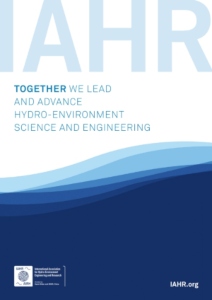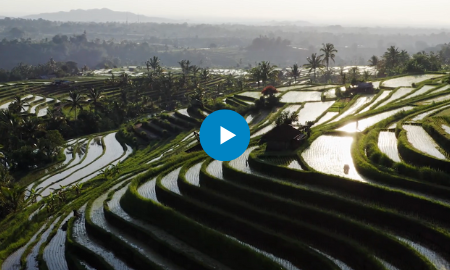What is IAHR
Strategic Plan Council Activities History Join Keep updated
 Introduction
Introduction
The International Association for Hydro-Environment Engineering and Research (IAHR), founded in 1935, is a worldwide independent organisation of engineers and water specialists working in fields related to the hydro-environmental sciences and their practical application. Activities range from river and maritime hydraulics to water resources development and eco-hydraulics, through to ice engineering, hydro-informatics and continuing education and training. IAHR stimulates and promotes both research and it's application, and by so doing strives to contribute to sustainable development, the optimisation of the world's water resources management and industrial flow processes. IAHR accomplishes its goals by a wide variety of member activities including: working groups, research agenda, congresses, specialty conferences, workshops and short courses; Journals, Monographs and Proceedings; by involvement in international programmes such as UNESCO, WMO, IDNDR, GWP, ICSU, and by co-operation with other water-related (inter)national organisations.
Strategic Plan
In order to ensure the good management of the association and to help achieve the objectives set out in the 2024-2027 Strategic Plan, the IAHR has set up from 2024 onwards a series of management committees and task forces to ensure that the activities of the association support its vision, purpose, and aims.
Every management committee/task force provides oversight and leadership to the association by:
- setting the strategic direction to guide and direct the activities of the association,
- ensuring the effective management of the association and its activities,
- monitoring the activities of the association to ensure they are in keeping with the strategic objectives.
>> More information about IAHR Management Committees and Task Forces
Activities
IAHR particularly promotes the advancement and exchange of knowledge through working groups, specialty symposia, congresses, and publications on water resources, river and coastal hydraulics, risk analysis, energy, environment, disaster prevention, industrial processes. Among the variety of activities which are undertaken to achieve our mission are:
 organising events: congresses, specialty conferences, workshops and continuing education courses
organising events: congresses, specialty conferences, workshops and continuing education coursestechnical meetings through our Committees
regional meetings through our Regional Divisions and National Chapters
European Engineering Graduate School Environment Water: IAHR-EGW, Stuttgart
participation in international programmes such as UNESCO, WMO and ICSU
promotion of student activities through our Young Professionals Networks
advocacy for the role of science in developing solutions to global water issues
The objectives of applied research, scientific exchange, technology transfer and research management provide an umbrella for all IAHR endeavours. The scope of IAHR involves research, engineering applications, and their interactions and thus caters to the needs of both individual and institute members. Hydro-environment Engineering and Research covers only one part of the water domain and most applications, developments, policies, and public works must consider all aspects of that domain. IAHR provides an excellent basis for co-operation with other water-related associations, where common interests call for combined efforts in hydrology (IAHS), urban water (IWA), development of water resources (IWRA), coastal and maritime engineering (COPRI), etc. Specific developments which take place within the IAHR disciplinary field but have thematically larger implications and application areas (e.g., hydroinformatics) are stimulated by IAHR. Professionals from different disciplines will find a place in IAHR, and interactions with neighbouring disciplines possibly covered by other associations are stimulated and can find proper attention. IAHR is a member of the International Council of Scientific Unions and other important global bodies.
IAHR publishes five international scientific journals from its headquarters in Madrid, Spain and Beijing,China in collaboration with Taylor and Francis and Elsevier –
In addition, IAHR offers it s members discounts for several other journals including the Journal of Hydroinformatics, Journal of Sediment Research and the Urban Water Journal.
IAHR publishes a quarterly magazine for its members called Hydrolink, and a series of monthly and quarterly NewsFlash e-Newsletters for the international water community.
IAHR logo and communications kit
Download the IAHR logo in different versions.
Access the IAHR Communications kit.
A journey through IAHR history
Start and consolidation: 1935 - 1960
The world’s first hydraulic laboratory is created in 1898 in Dresden, Germany, and subsequently numerous hydraulics institutes were founded in Europe and the USA. However, a wide gap between academic doctrine and engineering practice remained for the use of hydraulic models to study hydrodynamic phenomena. During this time, the science of fluid and hydromechanics progresses rapidly for many engineering applications such as hydropower, navigation, or aeronautics.
«The first 25 years of IAHR were marked by a systematic consolidation of the art and a perpetual struggle with the theoretical structuring of the many phenomena the profession has to deal with in the environment.» H.J. Schoemaker
Expansion and globalisation: 1961 – 1985
The profession experiences rapid developments in hydraulic research for turbulent flows, in laboratory and field measurement techniques, and in hydraulic modelling. With the development of digital computers, numerical calculations also advance rapidly. And in engineering applications, problems of sediment transport, mixing processes, and water quality issues required increasing attention.
«The second 25 years show a great expansion of the IAHR both in the fields of research and in dissemination over the world. New media of publicity were created, and old ones modified or abandoned. Seven successive Presidents led the IAHR with open eyes to the new possibilities science and technology offered in the effective functioning of the profession.» H.J. Shoemaker
Broadening the scope: 1986 – 2010
The end of the 1980s saw the advent of new professional innovations. Modelling software tools became, with the evolution of Information and Communication Technology (ICT), mass market tools and came to be used by nearly every engineering company. This development led to “hydroinformatics”, which opened up totally new possibilities. The combination of laboratory and numerical models together with field data provided good options for solving complex engineering tasks. And hydroinformatics for water and environment also provided new opportunities for interdisciplinary collaboration with geology for groundwater problems, with biochemistry for water quality problems, and for ecohydraulics. Ecohydraulics, at the interface of two historically different disciplines: ecology and hydraulics, also starts to emerge as a new discipline.
«The membership of IAHR has grown from about 1000 in 1960 to about 2000 members from all continents in 1985. The rapid developments of hydro-science and proliferation of research activities, which is reflected in the structure of the Technical Divisions and the growing number of sections, required strategic considerations by the IAHR Committee on Future Directions and Initiatives, which produced guidelines for the profile of IAHR in 1995 followed by an IAHR Strategic Plan 2005 -2009. The policy paper promoted several main thrusts: (1) Efforts to bridge the gap between research and application with inclusion of professional issues and engineering practice in its broadest sense into the IAHR spectrum of activities; (2) The broadening of the scope of IAHR activities towards water resources management, including ecological, economic and societal aspects; (3) Involvement in continuing education and professional development; (4) Initiation and support of regional and local activities.» Helmut Kobus. 85th anniversary special issue of Hydrolink
Recent developments: 2011 - to date
At the international level, despite progress in developing the field of environmental engineering, billions of people still lack safe water, sanitation, and handwashing facilities where a doubling of progress is required to achieve universal access to basic sanitation by 2030, as established in the Agenda 2030 Sustainable Development Goal 6. Throughout the early-mid 2010s, about 1.9 billion people (27% of the global population) lived in potentially severely water-scarce areas. An estimated 80% of all industrial and municipal wastewater is released to the environment without any prior treatment, resulting in a growing deterioration of overall water quality with detrimental impacts on human health and ecosystems. Average global economic loss from floods and droughts is over USD 40 billion per year across all economic sectors… The challenges for hydro-environmental engineering are tremendous.
«During the last decade IAHR has consistently continued to develop along its strategic goals. Water resources management needs adequate solutions, and IAHR has the necessary state of the art prerequisites available. Hydro-systems models provide the tools for tackling problems of increasing complexity, and environmental systems models can provide the basis for interdisciplinary cooperation. Also, the shift from physical to numerical models caused a corresponding shift from laboratory measurements to large scale field measurements. Modern observation and information systems with remote sensors are available and can be used both for the purpose of model validation or for monitoring the state of the water and environment system for prediction and control.» Helmut Kobus. 85th anniversary special issue of Hydrolink